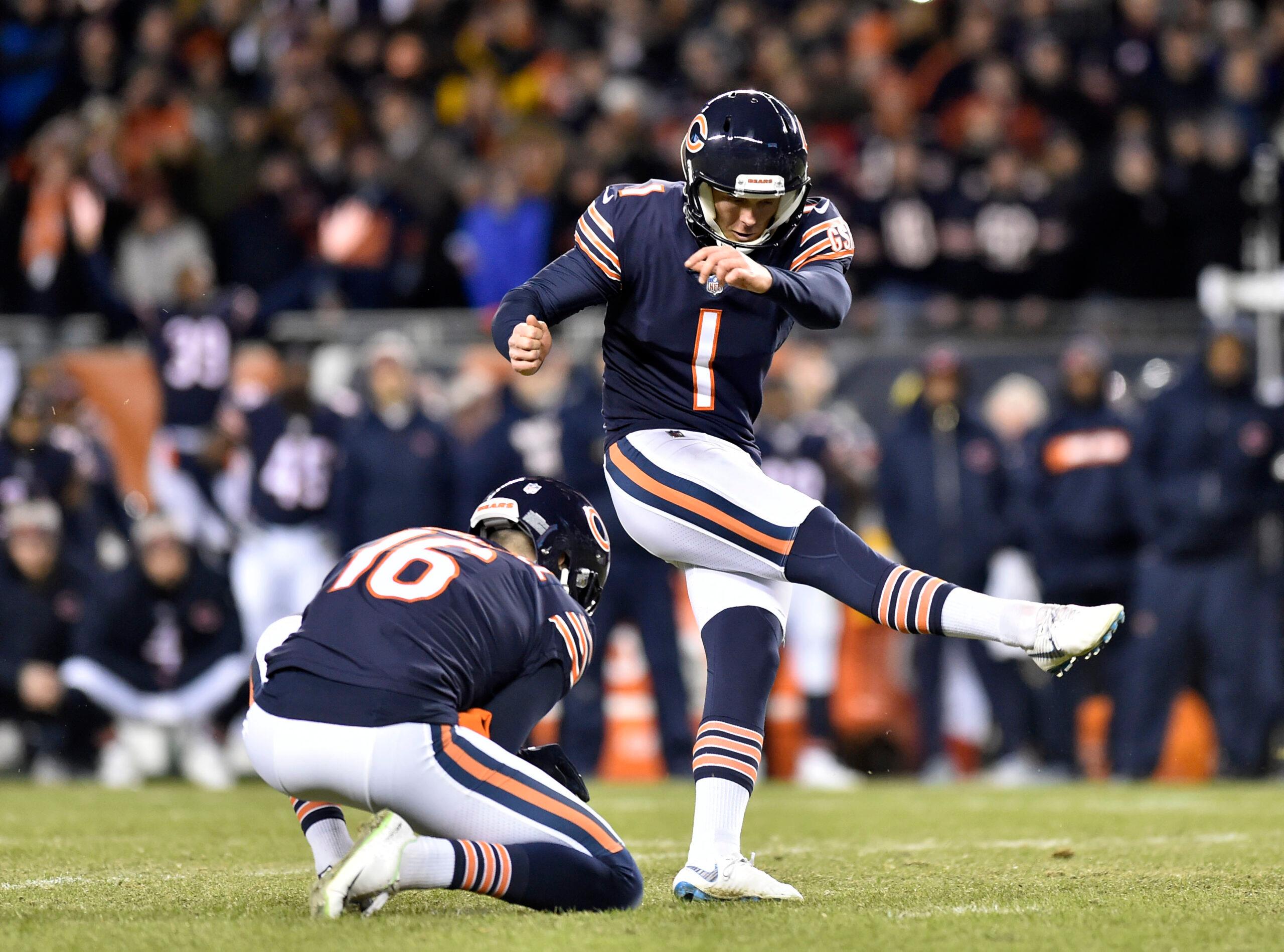
I’m a fan of football and a fan of analytics, and so every time there is a game that comes down to the wire, I remind myself: Icing the kicker does not work. There is no statistically significant difference in field goal percentage for when a kicker is iced versus when he kicks normally. If anything, a coach using a last-second timeout might just give the opposing kicker a practice kick, and that can slightly increase the probability of a kicker making a game-winning field goal. This is what the numbers tell us, and I hold the numbers in high regard.
But boy, that Eagles-Bears game has me reconsidering. With just 10 seconds left in the fourth quarter and Chicago down 16-15, Bears kicker Cody Parkey lined up for a 43-yard field goal and booted it right through—except Eagles coach Doug Pederson had called his final timeout. Now Parkey just had to wait a few seconds and make the same kick he had just drilled seconds before. And, well …
It’s like someone had cracked open a Pepsi on the sideline. This kick did everything except go through the uprights: It hit both the upright and crossbar, killed the Bears mascot, made Matt Nagy a meme, and earned Nick Foles $1 million. It was pure anguish for Chicago fans who haven’t seen a playoff team since 2010, especially when this 12-4 squad earned the best record of any Bears team since 2006 and was just one game away from earning a first-round bye. It also sent the Eagles to take on the Saints and the Cowboys to take on the Rams.
There is no one whom this could happen to who would be more appropriate than Parkey. In November, Parkey had four kicks hit the uprights in a game against the Lions and had another last week against the Vikings—now he hit the upright twice in one kick. Parkey has generally struggled this year, hitting just 76.7 percent of his field goals (30th leaguewide) and 93.3 percent of his extra points (23rd). It should be just a coincidence that Pederson’s icing worked, of course—again, that’s what the numbers say—but the fact this kick wasn’t just a doinker but a double doinker is so incredible that I can only explain it with otherworldly forces. Maybe Nick Foles really is a superhero—or at least the most powerful good luck charm ever.
Of course, solely focusing on Parkey’s failure would be irresponsible—the Bears did quite a bit of work to give this game away. The Bears’ win probability in this game was as high as 89.2 percent when the team was up 15-10 with four minutes left. But the Chicago defense that had held so sturdy all year was helpless as Foles and Co. stormed down the field, and Nagy curiously didn’t use a timeout after the two-minute warning, allowing the Eagles to bring the clock down to under a minute when they scored their go-ahead touchdown.
It seemed like Nagy was saving a final timeout for his team’s drive down the field, which would give the Bears some flexibility to work the middle of the field, knowing they had the ability to stop the clock at any point before what could be a game-winning field goal. They sacrificed about 40 seconds to have that ability, which is a hefty price to pay … and then didn’t make the best use of it. On second down on the ensuing drive, Mitchell Trubisky delivered a 25-yard strike to Allen Robinson to put the Bears in field goal range, and the team called that final timeout with 33 seconds left rather than spike the football as quickly as possible.
Now the Bears were in a bind. They’d lost a massive chunk of time by not calling the timeout on defense, but also no longer had any of the flexibility they seemed to want on offense. Chicago gained only 8 more yards from that point out—it’s possible with an extra 40 seconds on the clock, the Bears could have been smarter about working the sidelines and getting up quickly for spikes and gotten a couple of more plays off, which, as a result, would have set Parkey up with an easier kick. A 43-yarder is no gimme.
Then again, the Eagles employed what should be an even less effective strategy for their final timeout, and it worked for them. So what do I know?

